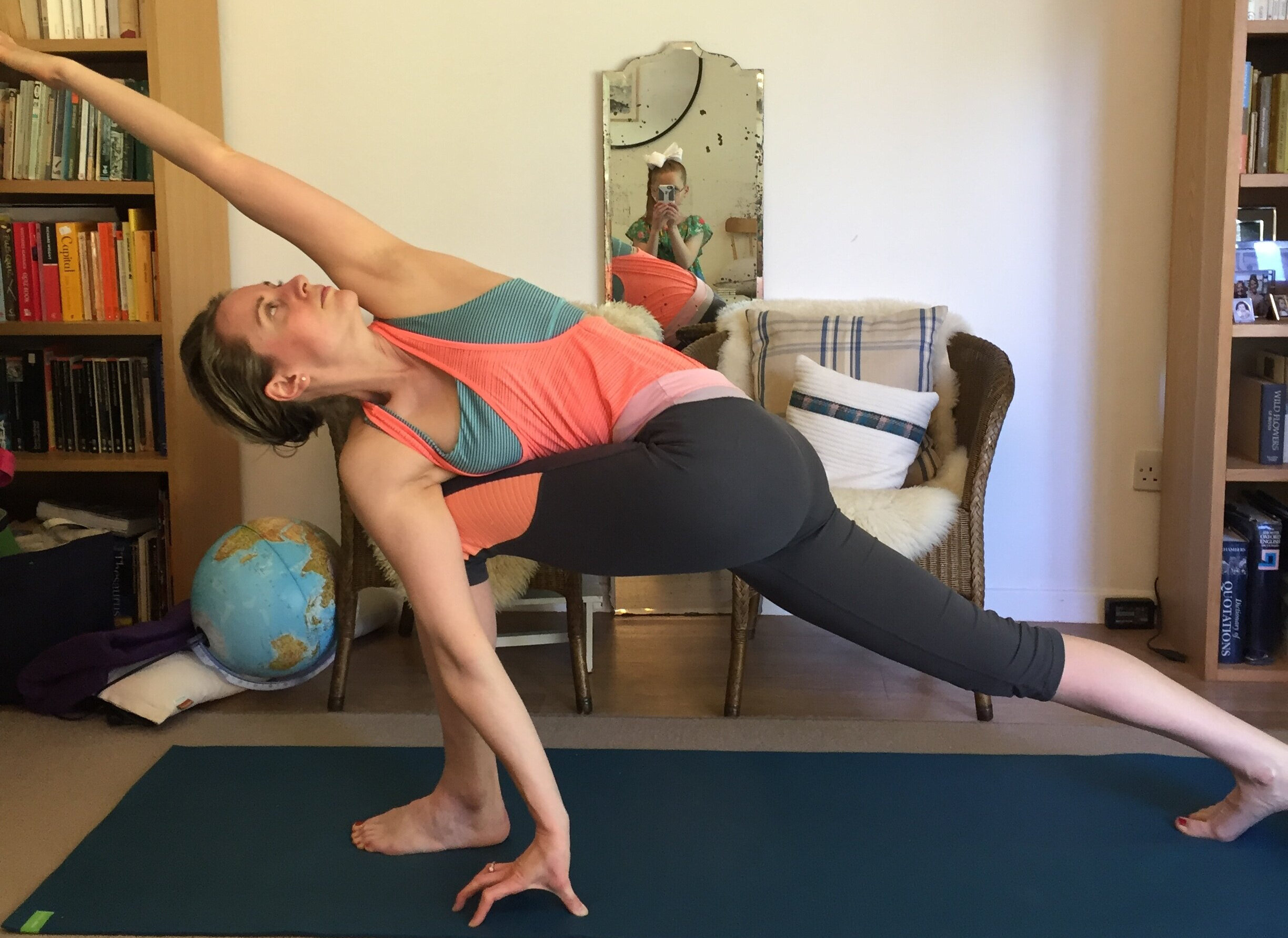Hi,
January is a brilliant time to get a home practice started. It's a new year, a new decade and there's a natural energy to make positive changes in your life.
As I've discussed in my previous blogs, a home yoga practice is different from the yoga that you do in a yoga class. It's more exploratory and it's driven by your own motivation and willpower, both of which are useful things to cultivate.
In previous blogs, I've given you some short and simple practice ideas, but the key to a home practice is being able to decide for yourself what poses to practice and in what order. This is called 'sequencing'.
What is sequencing?
Yoga sequencing is an art and a science and takes years to master. As a newly-qualified yoga teacher, I asked my senior teacher for some sequencing tips for lessons. Her answer was salutary, "Sequencing IS yoga, you need to work it out for yourself." Harsh but fair.
But there are certain rules about sequencing, and I'm going to give you a whistlestop tour of them right now.
The (Unwritten) Rules of Yoga Sequencing
There are hundreds of yoga poses, but these poses are generally grouped into 'types' of pose.
We have:
· Warm up poses - such as Adho Mukha Virasana (downward-facing hero pose)
· Standing poses - such as Tadasana (Mountain pose) and Trikonasana (Triangle pose)
· Forward bends - such as Paschimottanasana (Seated forward fold)
· Seated poses - such as Dandasana (Staff pose) and Janu Sirsasana (Head to knee pose)
· Inversions - such as shoulderstand and headstand
· Twists and abdominal poses - such as Parivrtta Trikonasana (Revolved triangle pose)
· Backbends - such as Urdhva Dhanurasana (Upward-facing bow pose)
· Supine poses - such as Supta Baddha Konasana (Reclining bound-angle pose)
· Rest/Savasana - this deserves its own category, as no yoga practice is complete without it
Combining the types of poses
There are certain types of pose that you can pretty much do any-time, anywhere. Downward dog is one of those poses, as is its partner pose Adho Mukha Virasana. These two work well to begin a practice, and when done without holding Downward dog for too long, can also be a nice way to cool down towards the end.
Generally speaking, a complete yoga practice will have one of all of the categories above. So, an example sequence might be:
Warm-up poses - Pavana Muktasana (wind-relieving pose)
Supta Padangustasana 1 & 2 (reclining hand to big-toe pose - leg straight up, and then out to the side)
Standing poses - Tadasana (mountain pose)
Vrksasana (tree pose)
Trikonasana (triangle pose)
Forward Bends - Ardha Uttanasana/Uttanasana (Half Standing forward fold)
(Standing forward bends are good preparation for the inversions.)
Inversions - Sirsasana (Headstand)
(Inversions are really important. If you don't do headstand you can do Prasarita Padottanasana (Legs wide apart forward fold).)
Backbends - Bhujangasana (Cobra pose)
Urdhva Mukha Svanasana (Upward facing dog)
Twists - Bharadvajasana 1 (Legs bent up to one side twist)
(This open twist releases the back and starts to cool the body down.)
Inversions - Sarvangasana (Shoulderstand)
(If you don't do shoulderstand you can do supported bridge pose to the wall or legs up the wall.)
Forward Bends - Janu Sirsasana (Head to knee pose)
Paschimottanasana (Seated forward fold)
(Seated forward bends turn the attention inwards and cool down.)
Rest - Savasana
At the end of your practice it's really important to rest to allow the body to absorb the benefits of the practice.
What NOT to do
There are also some hard and fast DON'Ts for yoga sequencing:
· DON'T do Savasana at the beginning of your practice. Unless your practice is just savasana.
· DON'T do shoulderstand before headstand.
· DON'T do only one side and not the other, even if you have an injury, find a way to make the pose accessible on both sides.
· DON'T intersperse backbends with forward bends such as Adho Mukha Virasana until you've finished doing all your backbends (apart from Downward dog, which is a kind of forward bend). You can do forward bends before and after backbends though.
· DON'T do backbends after shoulderstand. Shoulderstand tends to be the beginning of your cool-down.
· DON'T go into savasana from an energising pose such as the standing poses, or strong twists.
What to DO
As well as plenty of DOs:
· DO always follow headstand with shoulderstand or a shoulderstand variation, such as bridge pose. If you don't you'll be angry all day! This is because headstand is energising and fiery, and shoulderstand cools the body and mind.
· DO try different poses to warm up the body.
· DO fit in one restorative practice a week - this would include standing poses against the wall, supported reclining poses and pranayama (breath awareness and control).
· DO fit in a savasana at the end of your practice - even if it's a very quick one.
If you have any sequencing questions, or would like some ideas for different types of sequences, such as first thing in the morning, or last thing at night, or if you're stressed, or have a bad back, then don't hesitate to email me and I'll do my best to help.
Poppy x

